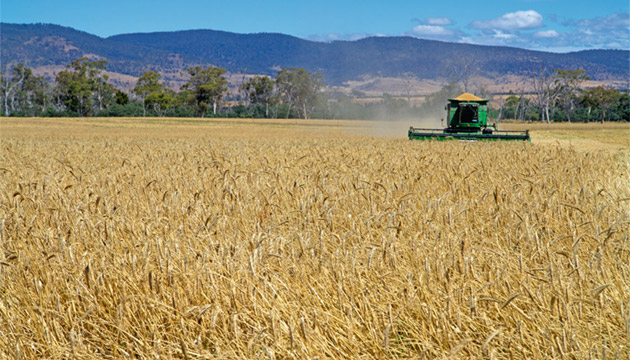Breaking with almost two centuries of family tradition, Rob O’Connor is steering Tasmania’s Benham Station in a new direction that embraces cropping without turning away from the superfine wool for which it is celebrated.
Story By Andrew Bain
Above the sheep yards of ‘Benham’, the morning mist has lifted and a cloud of dust hangs in its place, stirred by heat, weeks of dry weather and the movement of dozens of Merino rams in the holding yard. Livestock overseer Dave Squires swings open a gate and a line of rams clatters through the drafting race, ready to be classed. It looks like business as usual on a station that’s been one of Tasmania’s premier wool properties for almost two centuries, but in recent years business has been anything but usual at Benham.
Look over the backs of the rams, and a row of silos crowns a nearby ridge. It’s an image that symbolises Benham’s new direction. When Rob O’Connor took over the property in 2003, following in the footsteps of six generations of O’Connor sheep farmers, cropping represented just 10 percent of Benham’s revenue. Today, it’s more than 60%, with poppies, barley, wheat and sorghum growing where only sheep and cattle used to wander.
Even as he stands in the sheep yards, entering data from each ram into his computer, Rob is well aware that he’s broken the family mould and brought massive change to a property where history and tradition loom large. “Yeah, definitely, but that’s happened largely everywhere now through the Tasmanian Midlands,” Rob says. “We were probably one of the early ones to do it, but there was a good group that we went with. Heaps of people were telling us it couldn’t be done. It would have been embarrassing if we’d fallen flat on our face.”
Instead, Benham is thriving, continuing the growth of a property that Rob believes may be one of Tasmania’s oldest continually operating businesses.
This is an excerpt from a story in Issue 96 - Aug/Sept 2014 of Outback magazine.
This Story is from Issue #96
Outback Magazine: Aug/Sep 2014










